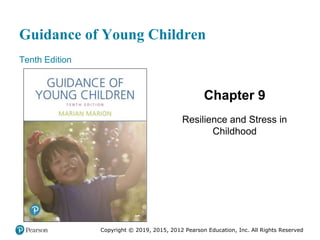The document discusses resilience and stress in childhood. It explains that resilience allows children to recover from difficult experiences without long-term negative effects. Resilience is fostered by caring relationships, high expectations, and opportunities for participation. The document also describes different types of stressors children may experience, including physical, psychological, acute, and chronic stress. It outlines how stress can affect children physically and behaviorally. Teachers can help children cope with stress by modeling good coping skills and creating a low-stress classroom environment.





























